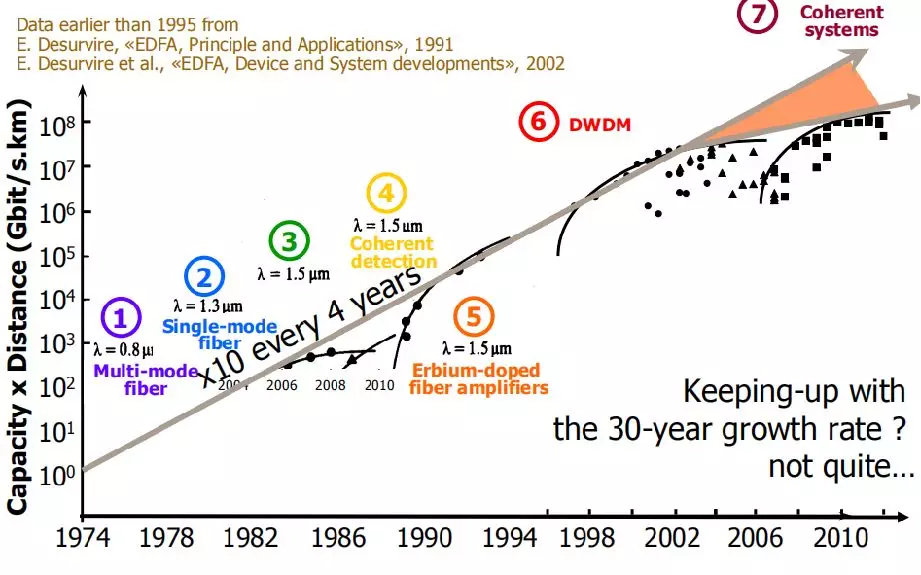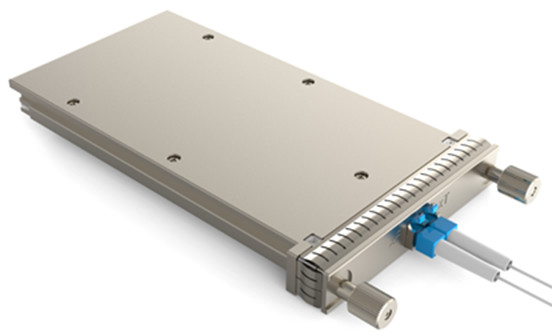What Is the DSP in Coherent Optical Modules?
As a leader of optical interconnection design, Gigalight has completed the R&D of 100G CFP-DCO coherent optical modules and successfully solved the 80km+ application on the line side. This is an important step for Gigalight in the Metropolitan Area Network (MAN) transmission solutions. You should know that, In China, there are few companies in the industry that can provide coherent optical modules.
While the Digital Signal Processing (DSP) technology is a key part in coherent optical modules, this paper introduces the role of DSP and its application prospects.
Coherent Technology
In the distant 1980s, scientists studying ultrafast optical communications began to study coherent optical communications. The advantages of coherent transmission are obvious: high sensitivity (suitable for long-haul transmission) and large bandwidth. However, in the 1990s, technologies such as Erbium-Doped Fiber Amplifier (EDFA) and Wavelength Division Multiplexing (WDM) debuted, replacing the original advantages of coherent transmission. Coherent technology has since been broken into the cold.
Luckily, coherent technology has not been buried in this way. In the current metro optical interconnect system, large-scale DWDM systems are gradually depleting their wavelength advantages, and there is a big technical bottleneck to improve the efficiency of Time-Division Multiplexing (TDM) systems by compressing optical pulses. How to do it? The younger brothers can't do it. It seems that they still have to rely on big brother. So, the coherent optical communication system has once again returned to the stage.

History of Transmission Technologies
For example, Gigalight's 100G CFP-DCO optical module is the result of research under new historical opportunities. The 100G coherent optical module belongs to the technical research field of long-distance transmission of 100G DWDM. It is mainly used for line-side optical transmission of 100G WDM system. Compared with other various forms of line-side optical modules, it features good OSNR performance, sensitivity, dispersion tolerance, and DGD tolerance, making it one of the best choices in the industry.
The Main Role of DSP
The key technologies of the coherent transmission system mainly include DP-QPSK, coherent detection and DSP high-speed digital processing. Except for the DSP link, most of them use commercial devices; if they are not purchasing particularly poor device products, the performance of each family is similar. The final impact on the final performance is in the DSP segment, and various manufacturers have adopted different patent algorithms.
High-Speed DSP Chips
- For dispersion compensation
- To remove noise, nonlinearity and other interference factors
- To provide digital clock recovery
- To restore the 100G signal from the transmitter
In general, the following three problems have been solved:
- High-order modulation formats to improve spectral efficiency
- Transmission effects of devices and signal channels
- Signal-to-Noise Ratio (SNR) issues

DSP Processing Data
The DSP has related processing on the client side and the line side, and has a framer inside, which can perform deframing and framing processing according to the G.709 protocol.
The Structure of DSP
What is the specific structure of the DSP? The DSP in the field of optical communication generally consists of several parts:
- Front-end analog-digital mixing
- Digital-to-Analog Converter (DAC)
- Analog-to-Digital Converter (DAC)
- Serdes
- Digital signal processing section
- FEC
- PHY section
Analog Digital Mixing
The main function of the ADC and DAC is to convert between analog and digital signals, which is the bridge between the modulation device and the digital signal processing part. The ADC and DAC are mainly composed of four key indicators:
- Sample rate
- Sampling effective bit width
- Analog bandwidth
- Power consumption
Among them, analog bandwidth is the main technical challenge, and under the condition of using DSP, the bandwidth limitation of general system is no longer optical device, but ADC and DAC.
Digital Signal Processing Unit
Digital data processing units are relatively simple to use within the data center.
For example, for the 100G PAM4 application, the spectrum compression, nonlinear compensation, FEC encoding, etc. of the transmitted signal are mainly completed at the originating end, and the signal is compensated by using an adaptive filter after the receiving ADC.
In the digital signal processing unit, the FIR filter is generally used to compensate the signal. The design of the FIR filter's tap number and the decision function directly determines the performance and power consumption of the DSP.

Gigalight 100G CFP-DCO Coherent Optical Module
The Power Consumption and Cost Issues of DSP
There is no doubt that DSP has increased power consumption while improving performance. Because DSP introduces DAC/ADC and algorithm, its power consumption must be higher than traditional CDR chip based on analog technology.
At present, the design power of the 400G OSFP/QSFP-DD based on the 16nm DSP solution is about 12W, which is a huge challenge for the module itself or the panel thermal design of the future switch.
In addition, the cost is always a topic of concern to data centers and 5G operators. Unlike traditional optical devices, for DSP chips, due to mature semiconductor technology, large chip cost reduction can be expected under the support of massive applications. space.
Summary
Due to the technical advantages (bandwidth and sensitivity), coherent optical modules will be of great use in the future optical communications market. As the most important part of the coherent optical module, DSP has many functions, including DAC/ADC sampling, frame matching and detection, differential decomposition coding, pulse shaping, clock data recovery and polarization equalization. In recent years, Gigalight has established the Wuhan R&D Center, attaches great importance to the cultivation of talents, and has achieved a series of leading results in the research of coherent modules.
Original article: What Is the DSP in Coherent Optical Modules?